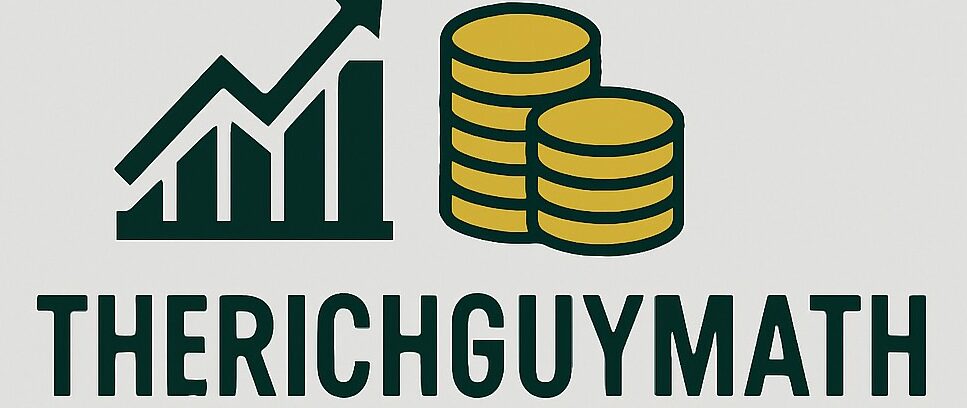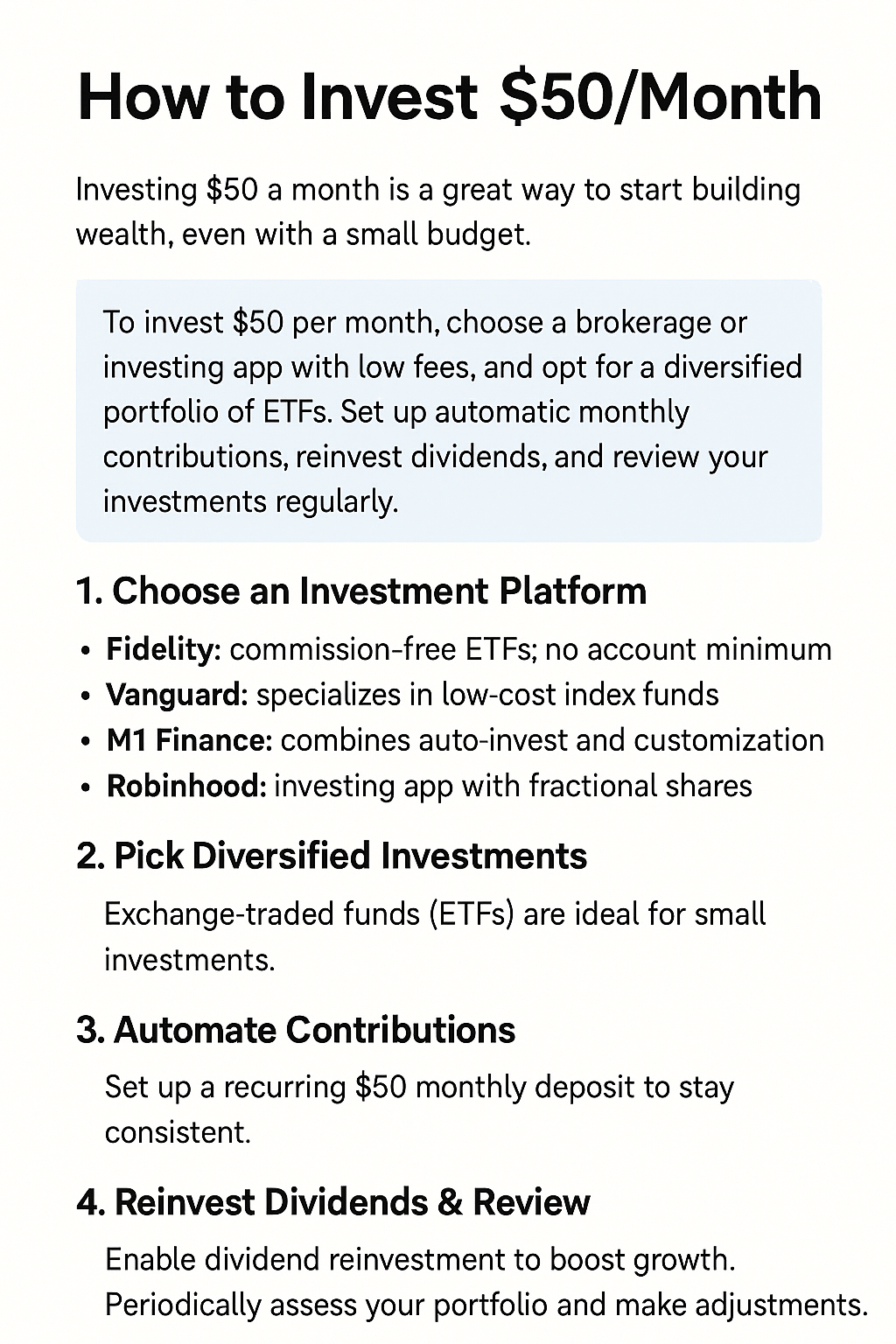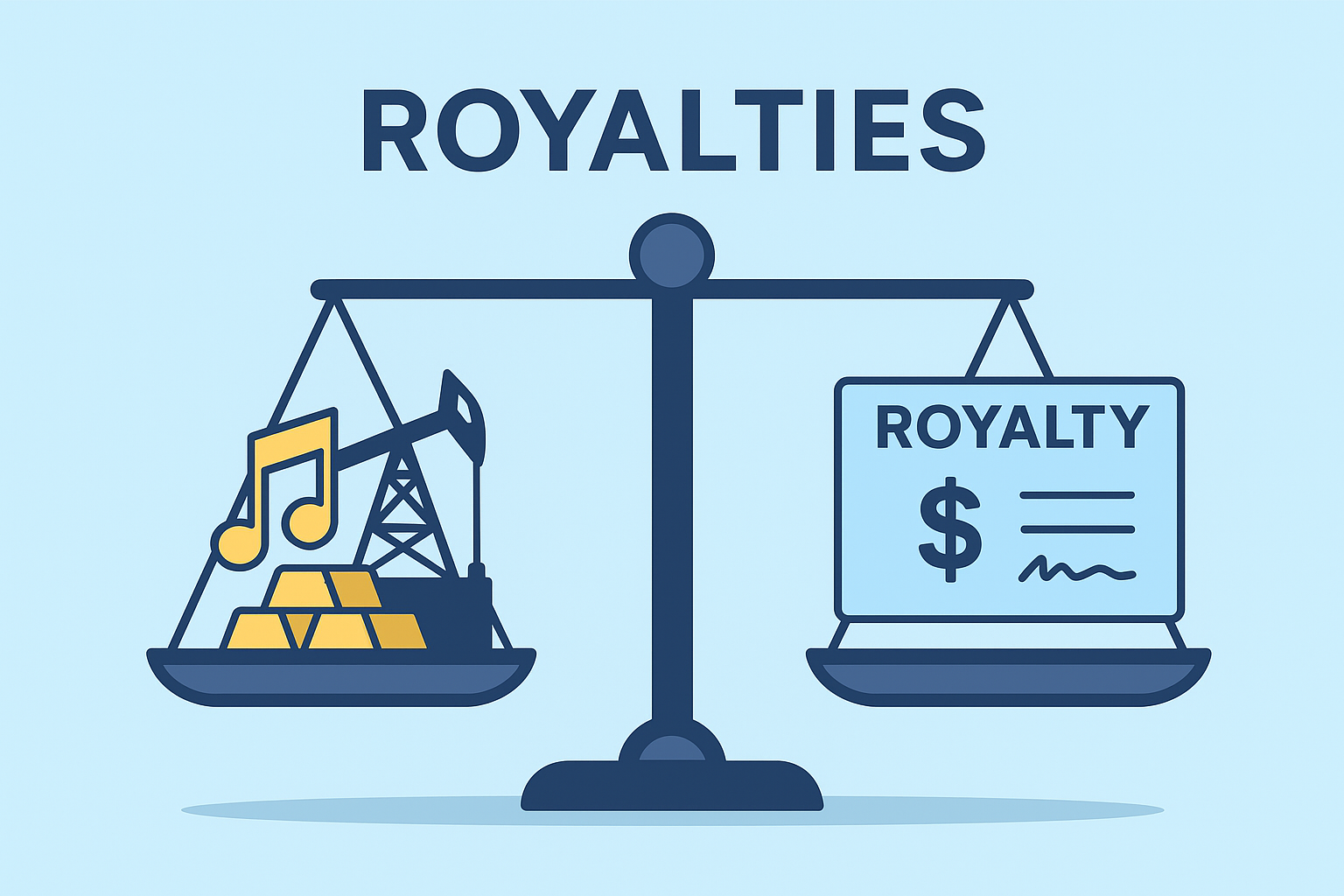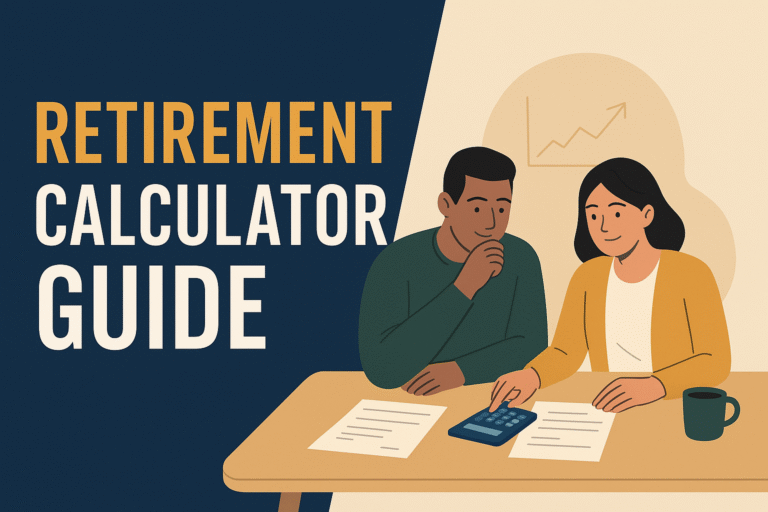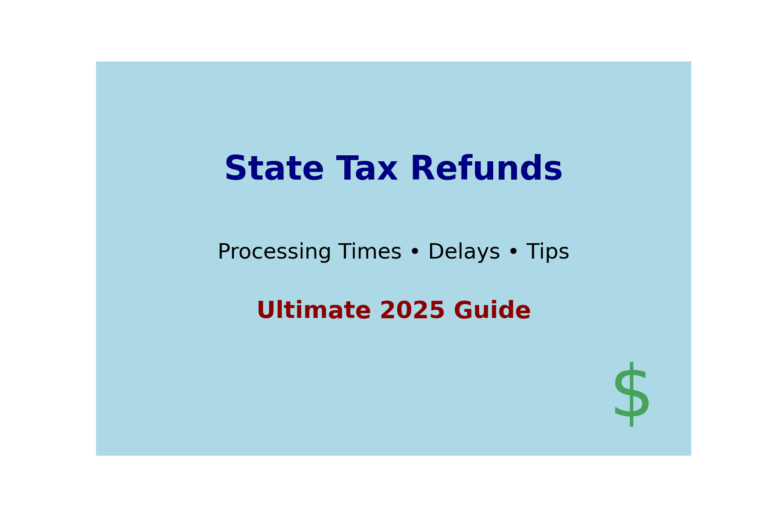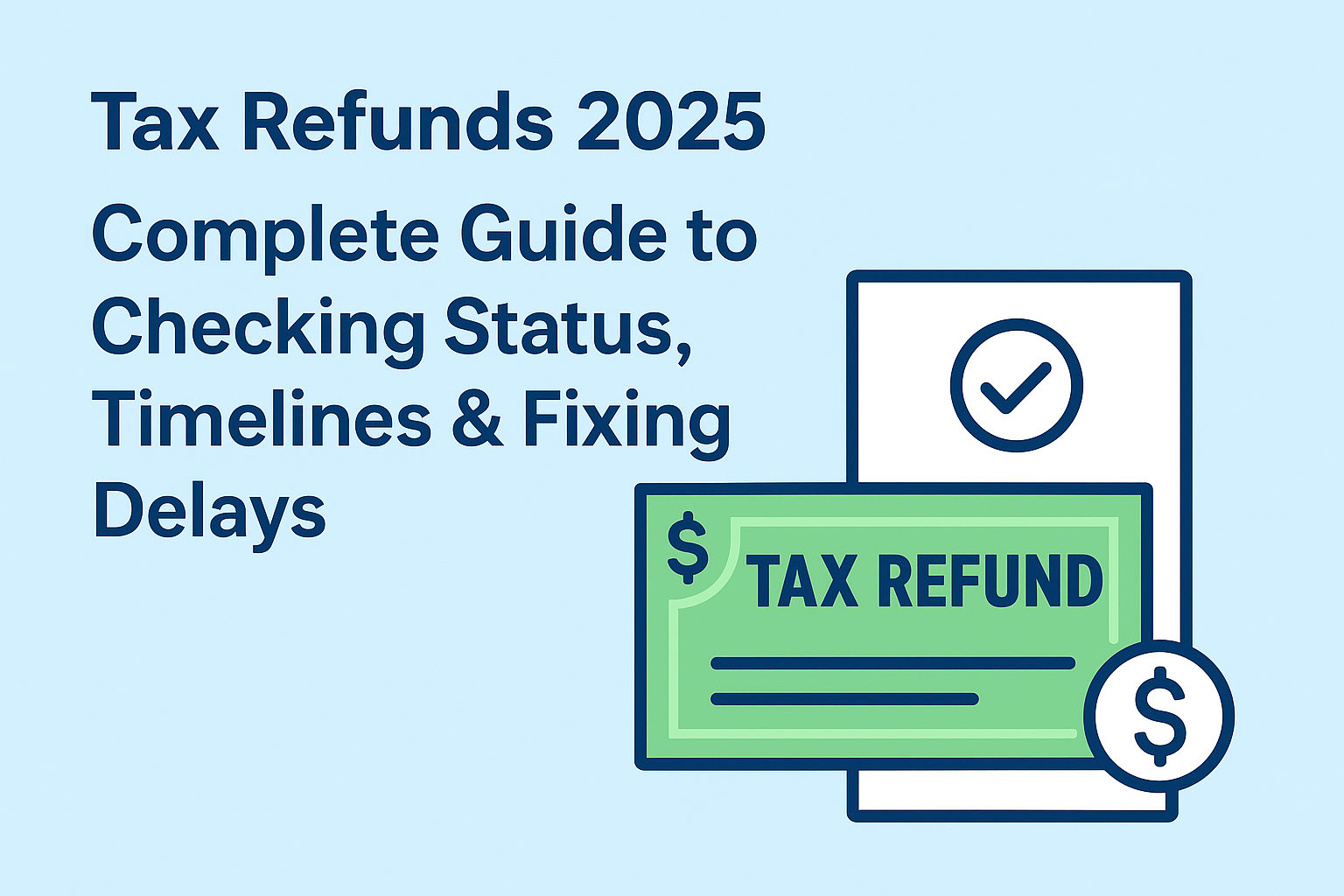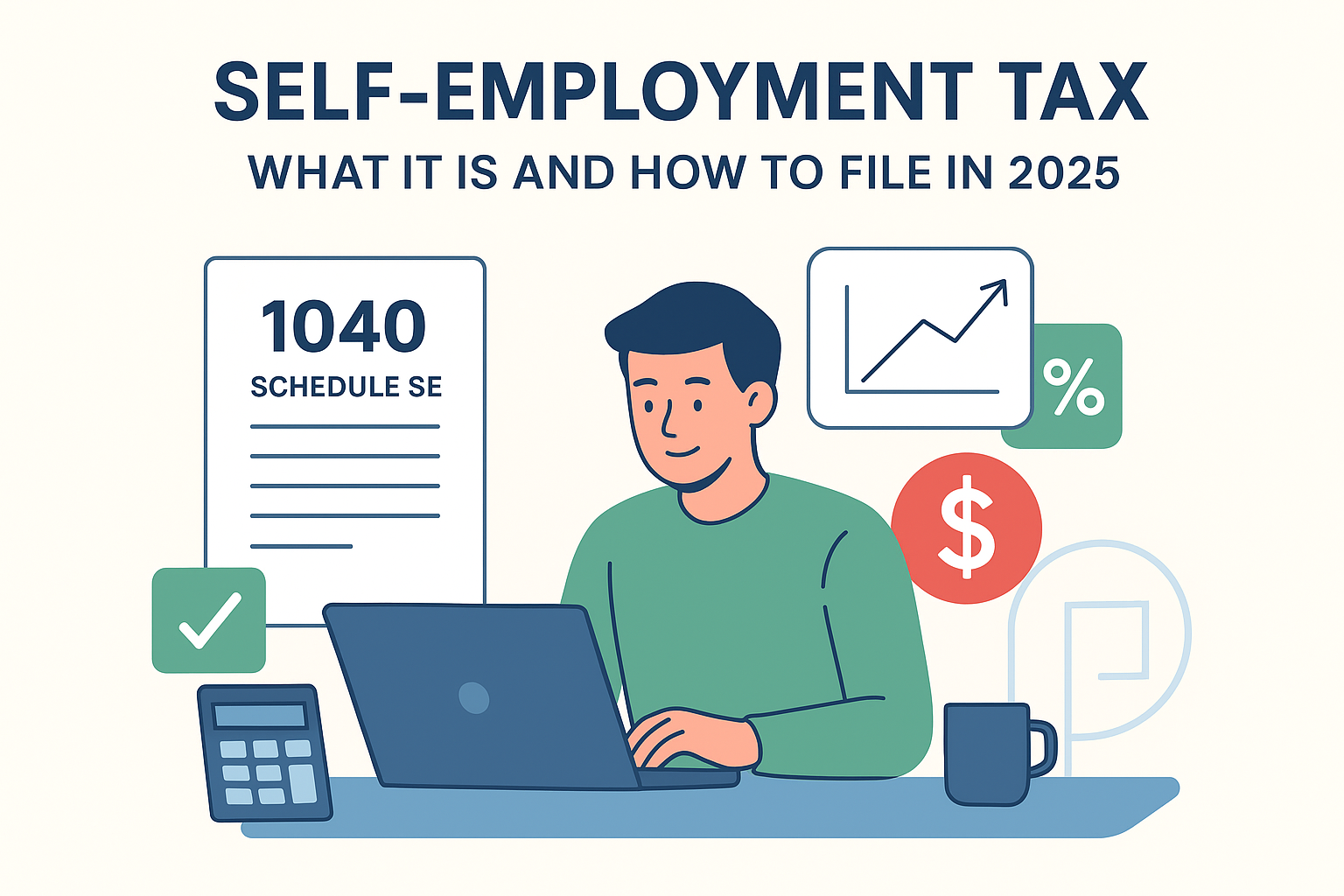How to Invest $50 a Month (Even on a Tight Budget)
Investing doesn’t require thousands of dollars upfront. You can start investing with just $50 a month, and over time, that small habit can snowball into real wealth. In this guide, we’ll break down exactly how to invest $50 a month the smart way, even if you’re brand new to investing.
Can $50 a Month Make a Difference?
Yes! Thanks to compound interest, even small monthly investments can grow over time.
For example:
If you invest $50/month with an average 8% annual return for 20 years, you’ll have over $29,000.
The key is to start early, be consistent, and choose low-cost, diversified assets.
Step-by-Step Plan: How to Invest $50 a Month
1. Set Up a Brokerage or Robo-Advisor Account
Choose a platform with:
- No account minimums
- Fractional shares support
- Low or zero trading fees
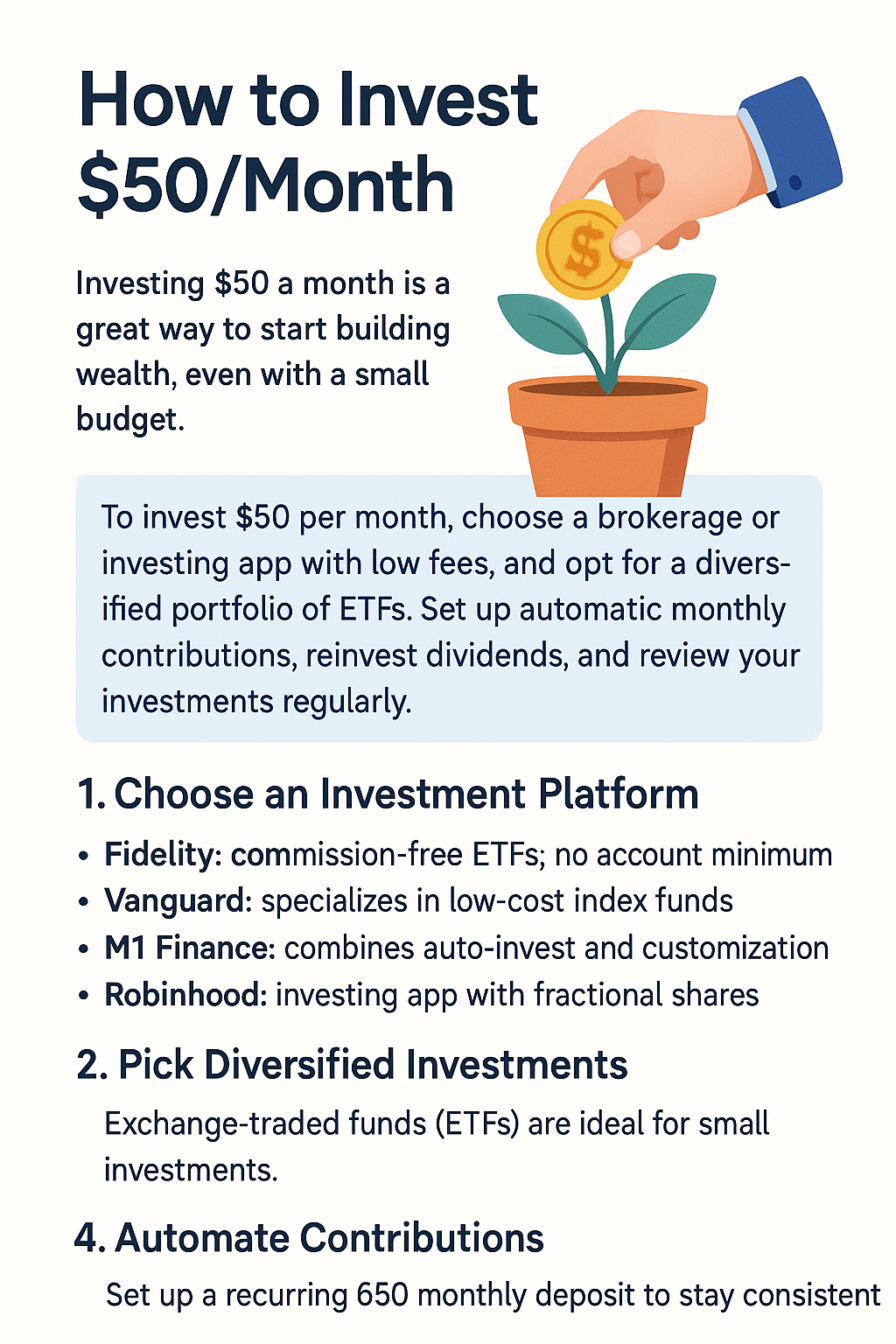
Beginner-Friendly Options:
Robinhood, Fidelity, SoFi, or M1 Finance2.
2. Use Dollar Cost Averaging (DCA)
Rather than trying to time the market, invest the same $50 every month.
Why this works:
- Reduces emotional investing
- Buys more when prices drop
- Smooths out volatility
🔗 Related: Dollar Cost Averaging: A Smart Way to Start Investing
3. Invest in Low-Cost Index Funds or ETFs
ETFs let you invest in hundreds of companies with one low-cost purchase. Perfect for small budgets.
Best $50/month ETFs:
| ETF | Focus | Expense Ratio |
|---|---|---|
| VOO | S&P 500 | 0.03% |
| SCHD | Dividend Stocks | 0.06% |
| VT | Global Market | 0.07% |
| QQQ | Tech Sector | 0.20% |
📌 Pro Tip: Use M1 Finance or Fidelity to buy fractional shares of ETFs.
4. Automate Your Investments
Set up automatic monthly contributions to stay consistent. This builds discipline and ensures you pay yourself first.
5. Track & Reinvest
Check your investments every quarter, not every day. Reinvest dividends and stay the course.
Related: The $50/Month Investment Plan That Builds Wealth Over Time
What’s the Best Way to Invest $50 a Month?
Here’s a sample $50/month portfolio for beginners:
- $20 in VOO (broad U.S. market)
- $15 in SCHD (dividends)
- $10 in VT (global exposure)
- $5 in QQQ (growth potential)
Over time, you can adjust based on goals, but this gives diversification from day one.
es, especially with fractional shares and no-minimum platforms.
For beginners, ETFs are better due to instant diversification and lower risk.
At least 5 years or more to benefit from compound growth and market cycles.
Final Thoughts: Start Small, Stay Consistent
If you’ve been waiting to invest because you thought you needed a lot of money, stop waiting. Investing $50 a month is not only possible, but it’s also one of the best habits you can build for your financial future.
✅ Start with what you have
✅ Choose low-fee ETFs
✅ Automate your monthly $50 investment
✅ Let time and compound growth do the rest
